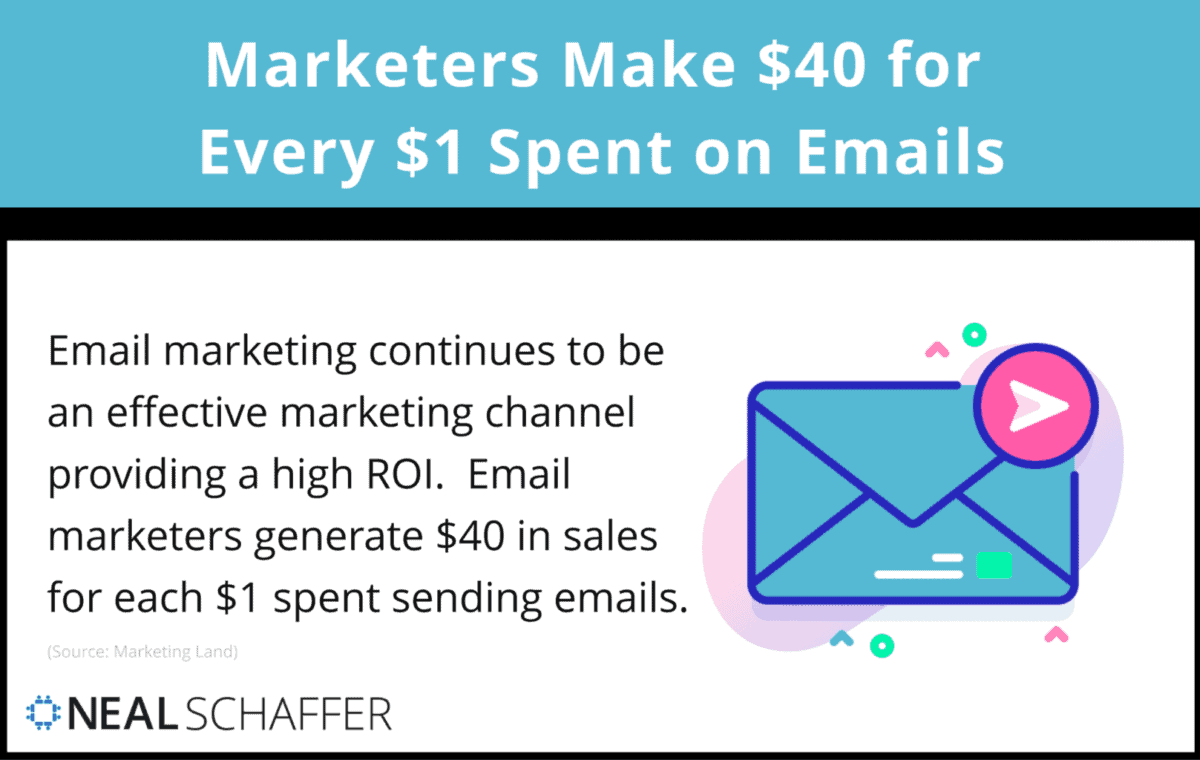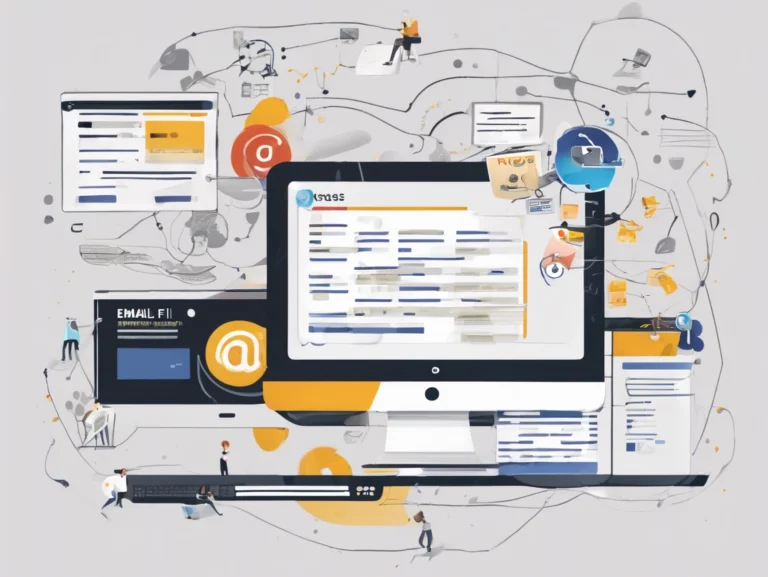Email marketing is one of the oldest forms of digital communication. In 1978, Gary Thuerk sent the first email blast to 400 recipients promoting DEC machines, which resulted in $13 million worth of sales. Since then, email marketing has become an indispensable tool in every marketer’s tool belt, and rightfully so.
In this article, we’ll discuss what email marketing is, its advantages, and tried-and-true email marketing strategies to help you get more bang for your buck.
Email marketing definition
Dubbed as the king of digital marketing, email marketing offers a fast and convenient way to reach target audiences with highly relevant content. It can become a worthy addition to any omnichannel marketing strategy — currently there are nearly 4.2 billion email users globally and this number is growing.
Chances are that your inbox right now has at least a couple of email marketing messages looking like this:

What are the advantages of email marketing?

There are many advantages of email marketing for companies of all sizes and stripes. From establishing a direct communication line with consumers and building brand awareness to nurturing leads and improving conversions, email marketing still reigns supreme, ranking ahead of other digital channels like affiliate marketing and social media marketing.
But don’t take our word for it — here are the numbers to back it all up:
- For every $1 spent on email marketing, businesses can expect to generate a whopping $40 in return;
- 61% of customers like getting promotional emails on a weekly basis, and 38% — even more often;
- At least half of respondents say that they buy products and services from marketing and advertising emails at least once per month;
- 99% of users check their email every day, some up to 20 times a day;
- Abandoned cart emails help recover from 3% to 14% of lost sales with an average revenue of $5.81.
Step up your email marketing game with these 13 strategies
A well-thought-out strategy can go a long way in driving the success of your email marketing campaign. Here are 13 best practices with examples to start with.
1. Make use of automation
Don’t believe in the power of automation?
Did you know that automated messages accounted for only 2.2% of all emails sent but generated 29.6% of all email orders?
Email automation is a powerful technique that allows companies to automatically send triggered or timed messages to prospects. Email automation helps reduce time wasted on repetitive tasks and allows marketers to focus on more value-added work like in-depth customer research. Welcome emails, abandoned cart emails, birthday and anniversary emails, new products, and back-in-stock emails — these are all types of messages that one can schedule to send upon a certain event.
2. Leverage split testing
Split testing, or A/B testing, is a way of understanding which of the two options is more effective. In the context of email marketing, A/B testing allows you to send two variants of a campaign to two separate groups of subscribers, with the ultimate goal of finding out what option generates more clicks and opens.
You can start small and swap different elements of an email like calls to action, subject lines, offers, or images. Then, further down the road, you can even test completely different email formats and designs against each other to find what works for your business.
3. Build your email list, not buy
There are basically three ways how marketers can acquire email lists — buy them, rent them, or build them from scratch. Though purchasing or renting seems like an easy choice, it’s not the way to go. First of all, purchasing a third-party list of emails is against GDPR’s rule of consent. And what good would these emails do for your business if the recipients do not know you and, quite naturally, mark you as spam?
The right choice here is to grow an email list of contacts who have clearly opted in to receive newsletters, promotional offers, and other content from you. Owning an opt-in email list not only protects you from a legal standpoint but also allows you to build more genuine relationships with your customers. That said, do not forget to clean your email list regularly because keeping disengaged subscribers on the list can kill your open rates.
Further Reading: 7 Best Ways to Build an Email List (From Scratch)
4. Segment your subscribers
Once you have built a solid and diverse subscriber database, it may be tempting to start sending them all you’ve got — discount offers, newsletters, and daily content pieces. But from a customer’s perspective, whether current or prospective, it can be very annoying to receive a totally irrelevant message. Who wants to get an invitation to an event on the other side of the world?
Email segmentation allows you to speak more directly with your customers and tailor your messages to their unique needs and preferences. To segment your audience as effectively as possible, start with persona development.
A user persona is a generalized representation of a specific segment of people who have subscribed to your email list. And once you have full-fledged personas in place, you can slice your subscriber list into groups that closely match these representations in order to create personalized content and craft value propositions.

5. Keep your subject line short but catchy
Subject lines are a linchpin of any email marketing campaign as they directly impact open rates. As much as 47% of recipients open emails based only on the subject line, and 69% report it as spam based on the same criterion.
The primary purpose of a great email subject line is to grab attention. But keep in mind that today people are tired of long and over-the-top sales messages. A recent study showed that short subject lines with up to 49 characters had 12.5% higher open rates and 75% higher click-through rates.
Overwhelmed by Digital Marketing?
Just released: my new book to help small businesses, entrepreneurs, and marketers master digital marketing in today’s digital-first world.
Drawing on my Fractional CMO experience, Digital Threads simplifies complex strategies into clear, actionable steps for success.
Transform your business today—grab your copy! Click the cover or button below to buy on Amazon.
A sense of urgency can also increase opening rates. And although there is no one-size-fits-all approach, it’s always a good idea to keep your subject line not only up to the point but also human and relatable.
Further Reading: 10 Top Tips To Write Convincing Email Subject Lines That Get Opened
6. Optimize calls to action
Calls to action, or CTAs, serve an important goal of motivating readers to complete action right in the moment. Therefore, CTAs can never be an afterthought and you must optimize them in order to turn leads into paying customers. For example, one study revealed that button-based CTAs resulted in a 28% increase in click-through rates compared to link-based CTAs.
Other tips on CTA optimization include:
- Be strategic about the CTA placement — if your CTA requires a solid commitment like making a purchase, keep it at the bottom of the text after providing all necessary details;
- If you use an image CTA, add customized alternative text (alt text) to your HTML code to provide some context in case the image gets blocked;
- Be crystal clear about what action you want users to make (i.e. Sign up here, Request a demo, Download an ebook, etc.)
7. Include visuals
There is certainly some truth to the saying “A picture is worth a thousand words”. 65% of subscribers prefer messages that contain images, and marketers can capitalize on that by adding rich and impactful visuals to their emails.
Static images, photographs, 3D images, animated illustrations, and even GIFs are an excellent way to make your email a visual treat. Just make sure that visual elements support the message you want to get across. Here’s a great example of how Huckberry uses imagery to enhance the user experience:

Further Reading: Email Marketing Design: 13 Best Practices to Follow
8. Do not forget about being mobile friendly
Today, almost 62% of emails are opened on a mobile device, and that’s a pretty big jump from just 27% in 2012. Needless to say, this figure reflects changes to consumer behavior and a major shift to a mobile-first world. And failure to optimize your emails can cause poor user experiences or even unsubscriptions.
Here are some recommendations to make your emails mobile-friendly:
- Keep your copy concise;
- Make design responsive;
- Avoid menu bars;
- Use single-column templates;
- Make the call-to-action button easy to tap;
- Test on different mobile devices.
Further Reading: Looking for Email Marketing Templates? Here are My Top 15 Recommendations
9. Avoid using a no-reply address
Essentially, a no-reply email is an email in the format “noreply@yourcompany.com” that is incapable of receiving email responses. So if a customer tries to reply to such an email, they will receive a message telling that their reply failed to be delivered. And it can be very frustrating.
Not only do no-reply addresses discourage two-way communication, they can also hurt the deliverability rates and your business. Spam filters used by Internet service providers can detect a no-reply email and prevent it from making it into the inbox in the first place.
10. Use spam checkers
If there is one drawback to emails, it’s keeping them from your recipient’s spam folder. You may spend countless hours mastering the copy and setting up the campaign, but all the efforts go right down the drain if your emails are spam boxed.
To avoid the email marketing disaster, you can take advantage of a spam checker — a tool that runs your emails through spam filters to detect suspicious subject lines, spammy words and phrases, blacklisted IP addresses, and other elements that might potentially get your emails marked as spam. One such service is Mail-tester which analyzes your emails, gives them a spam score from 1 to 10, and underlines what needs to be fixed.
Further Reading: SMS and Email Marketing: Leveraging Both for Maximum Impact
11. Measure what matters
“You can’t improve what you don’t measure”. This famous quote largely attributed to Peter Drucker rightfully underlines the importance of tracking correct metrics that would allow you to find areas for improvement.
When it comes to email marketing, these metrics can include:
- Open rate. Check the percentage of opened emails to understand if your subject line works as intended;
- Bounce rate. Track the number of emails that don’t reach your subscribers to weed out fake email addresses in your list or to detect technical issues with delivery;
- Click-through rate. Monitor how many people click on at least one link in your email to see if you target the right audience;
- Conversion rate. Calculate how many people click on a link in the email and then complete an action like a signup or purchase. This will give you an understanding if your investments in the campaign are paying off;
- Unsubscribe rate. Track this metric to see how subscribers respond to your email campaign and whether it needs improvement.
12. Offer freebies
Today, people are cautious and very few of them are willing to just give you their email addresses. But things can change with a little bit of incentive.
Freebies also called opt-in gifts or lead magnets, refer to a free resource or item of value that you provide to subscribers in exchange for signing up for your mailing list. This makes them feel valued and gives them a reason to join the tribe of your subscribers. Such opt-in gifts can include everything from ebooks and how-to guides to checklists and planners to even online master classes and free coaching calls.
Here is a live example of embedding a relevant freebie into a blog post:
13. Run win-back campaigns
Email list decay is inevitable and you will lose about 22% of subscribers per year. That’s why it’s important to re-engage with inactive customers to keep this number at a minimum.
Identify your inactive subscribers and send them an email reminding them that they are missed and asking why they stopped interacting with your brand. You can also try to win them back with a discount, special offer or an incentive — that’s what Virgin Experience Days gracefully does in its re-engagement email.
Further Reading: 10 Email Marketing Best Practices To Skyrocket Your Results
The bottom line
Even amid rapidly emerging new technologies, email marketing stays supreme. According to the State of Marketing Report 2022, 95% of professionals consider email marketing as the primary channel to drive business growth. And this comes as no surprise since the results of email marketing include building long-lasting relationships with customers and promoting brand awareness — all without costing an arm and a leg.
Indeed, there is no perfect formula for launching a successful email marketing campaign. In this article, we have discussed 13 reliable strategies to help you improve your email marketing performance and boost your conversion rate.
Author Bio
Iryna Kandrashova is the head of marketing at UXPressia, a user experience platform that allows you to сreate, export, and share customer journey maps, personas, and impact maps online. Iryna is keen on traveling, prefers an active lifestyle and amateurish sport. You can get in touch with her on LinkedIn.
Hero photo by Markus Winkler on Unsplash










